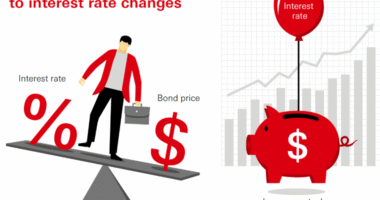Buying a car is an exciting milestone — but financing it wisely is what truly defines a smart purchase. Whether you’re eyeing a brand-new electric vehicle or a reliable used car, finding the best car loan finance rates can save you thousands over the life of your loan.
In this comprehensive guide, we’ll explore how car loans work, what factors affect your rates, and proven strategies to secure the most favorable financing for your next vehicle.
Understanding How Car Loan Financing Works
Before shopping for a loan, it’s crucial to understand the basics of car loan financing.
When you finance a car, you borrow a specific amount from a lender and agree to repay it with interest over a set period — typically 36 to 72 months. The interest rate you receive determines how much extra you’ll pay in total.
A lower rate means lower monthly payments and less interest paid overall, making rate shopping one of the most important parts of the car-buying process.
Key Factors That Influence Car Loan Rates
Lenders evaluate several financial factors to determine your loan eligibility and rate. Knowing these can help you prepare in advance for the best possible outcome.
1. Your Credit Score
Your credit score is the single biggest factor in determining your interest rate.
-
A score above 750 often qualifies for the lowest rates.
-
Scores between 650–749 may still receive competitive offers.
-
Scores below 600 may face higher interest or require a co-signer.
Checking and improving your credit before applying can significantly lower your borrowing costs.
2. Loan Term
Shorter loan terms (36–48 months) usually come with lower interest rates, but higher monthly payments. Longer terms reduce monthly costs but can increase the total interest paid over time.
3. Down Payment
Making a larger down payment reduces the lender’s risk and can lead to a better rate. It also lowers the amount you finance, which decreases both your interest and monthly burden.
4. New vs. Used Cars
Interest rates on new cars tend to be lower than on used cars because new vehicles depreciate less in the early years and are easier for lenders to resell if repossessed.
5. Debt-to-Income Ratio
Lenders assess how much of your income goes toward debt. A lower debt-to-income (DTI) ratio shows you manage your finances responsibly, improving your chances for lower rates.
How to Prepare for the Best Car Loan Rates
Preparation is the key to success when it comes to financing. Here’s how to set yourself up for the most favorable loan terms possible.
1. Check and Improve Your Credit Report
Before applying, get a free copy of your credit report from agencies like Experian, Equifax, or TransUnion. Look for inaccuracies and dispute any errors.
Pay off outstanding debts, make payments on time, and avoid new credit inquiries before applying.
2. Save for a Larger Down Payment
A down payment of at least 10–20% can dramatically improve your loan terms. It reduces the loan amount and demonstrates financial stability to lenders.
3. Get Pre-Approved Before Visiting the Dealership
Applying for pre-approval from banks, credit unions, or online lenders gives you an advantage. It helps you:
-
Know your exact budget.
-
Negotiate confidently.
-
Avoid being pressured into higher dealership rates.
Pre-approval also lets you compare multiple offers to find the lowest interest rate.
4. Compare Multiple Lenders
Never settle for the first loan offer.
Check rates from banks, credit unions, online lenders, and dealerships. Even a 1% difference in rate can save hundreds or even thousands over the loan term.
Negotiating the Best Car Loan Terms
Once you’ve done your research, it’s time to negotiate. Many borrowers don’t realize they can bargain not only on the car price but also on financing terms.
1. Separate Car Price and Financing
Dealers often combine the car price and financing discussion to confuse buyers. Always negotiate the vehicle price first, then talk about financing separately.
This ensures transparency and avoids hidden markups.
2. Ask for the APR, Not Just the Interest Rate
The Annual Percentage Rate (APR) includes both interest and fees, giving a clearer picture of the loan’s real cost. Compare APRs instead of just interest rates to find the true best offer.
3. Avoid Add-Ons and Extended Warranties
Dealers may try to add unnecessary extras like extended warranties or gap insurance. While some may be useful, many are overpriced and increase your total loan amount.
H2: Choosing the Right Loan Type
Car loans come in various forms. Understanding your options ensures you pick the one that best fits your financial situation.
1. Dealer Financing
Convenient but often more expensive. Dealers might mark up interest rates for profit. Always compare dealer rates with outside lenders before agreeing.
2. Bank or Credit Union Loans
Credit unions and local banks often provide lower interest rates than dealerships. They also tend to have more flexible approval criteria and personalized service.
3. Online Auto Loans
Online lenders offer quick approvals and competitive rates. However, ensure the lender is reputable by checking customer reviews and verifying credentials.
Refinancing — A Smart Option After Purchase
If you already have a car loan but your rate feels high, refinancing could help. Refinancing means replacing your current loan with a new one that has better terms.
When to Consider Refinancing
-
Your credit score has improved since the original loan.
-
Market interest rates have fallen.
-
You want to shorten or extend your loan term.
Even a small reduction in interest can lower your monthly payment and total interest paid.
Common Mistakes to Avoid When Financing a Car
While securing a loan, beware of these common missteps that can cost you more in the long run.
1. Ignoring Your Credit Score
Failing to review or improve your credit before applying can lead to unnecessarily high rates.
2. Focusing Only on Monthly Payments
Dealers may extend your loan term to lower monthly payments, but you’ll pay much more interest overall. Always look at the total cost, not just the monthly number.
3. Skipping Loan Comparisons
Not shopping around is one of the biggest mistakes. Even a small rate difference adds up significantly over time.
Final Thoughts — Smart Financing for a Smarter Ride
Securing the best car loan finance rates isn’t just about getting a good deal — it’s about protecting your long-term financial health.
By improving your credit, saving for a larger down payment, comparing offers, and negotiating confidently, you can save thousands and drive away with peace of mind.
Remember: The key to financial success isn’t just owning a car — it’s owning it the smart way.








